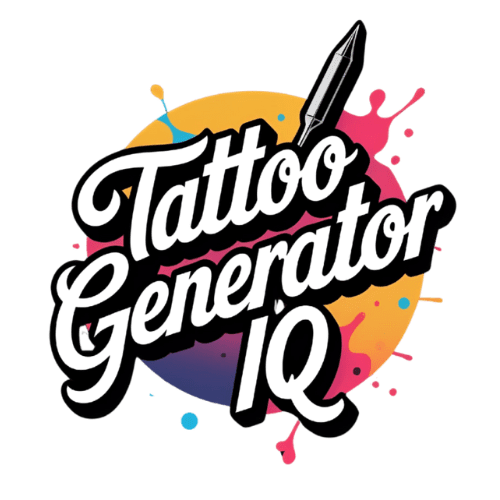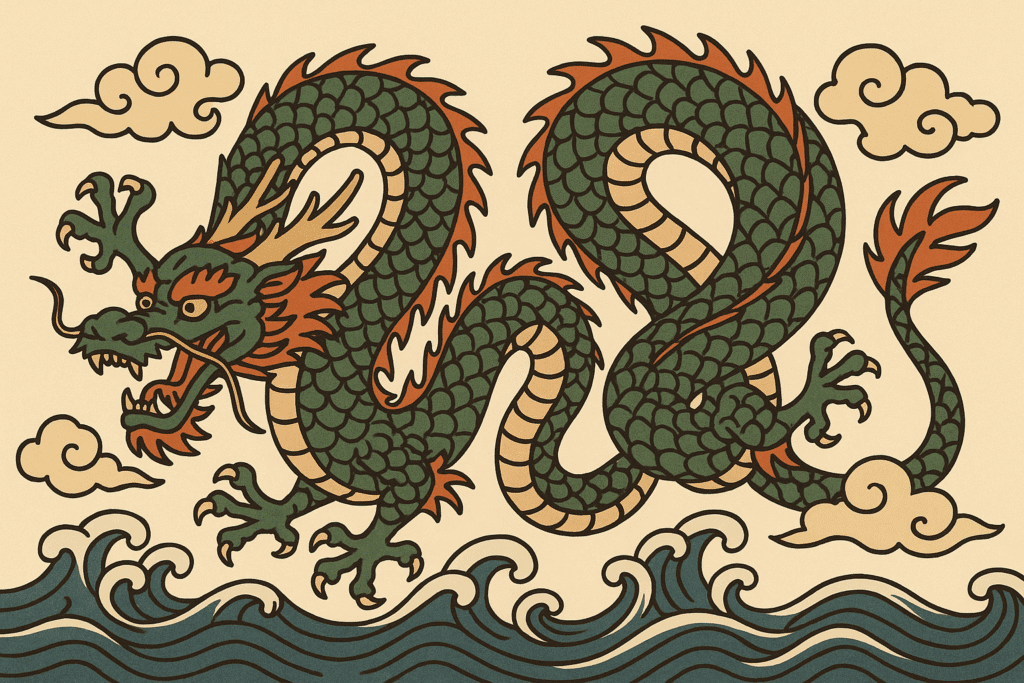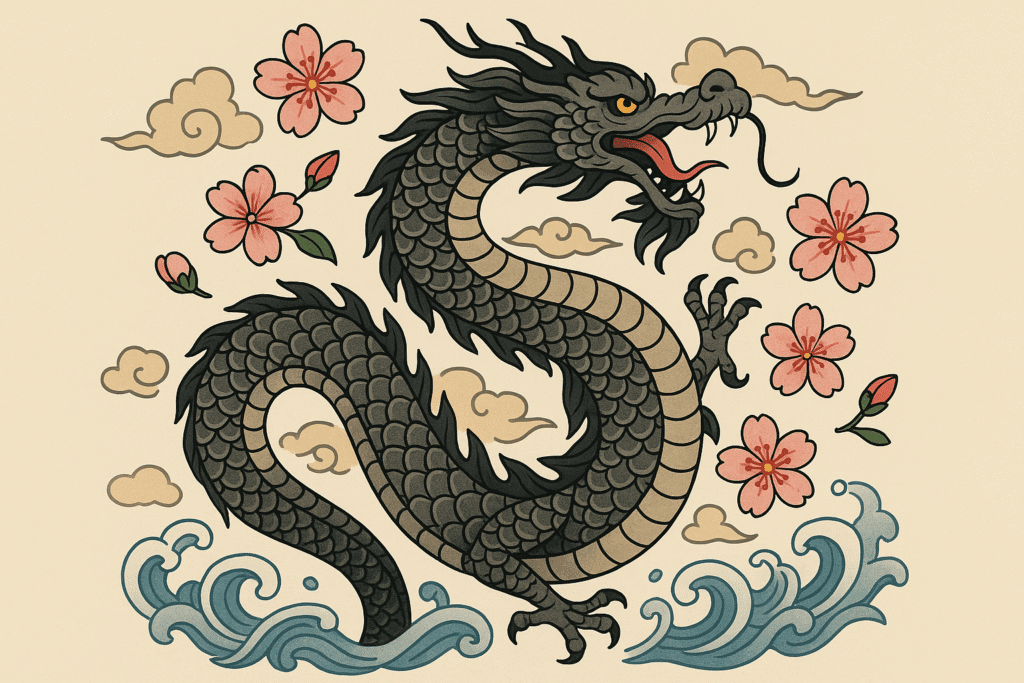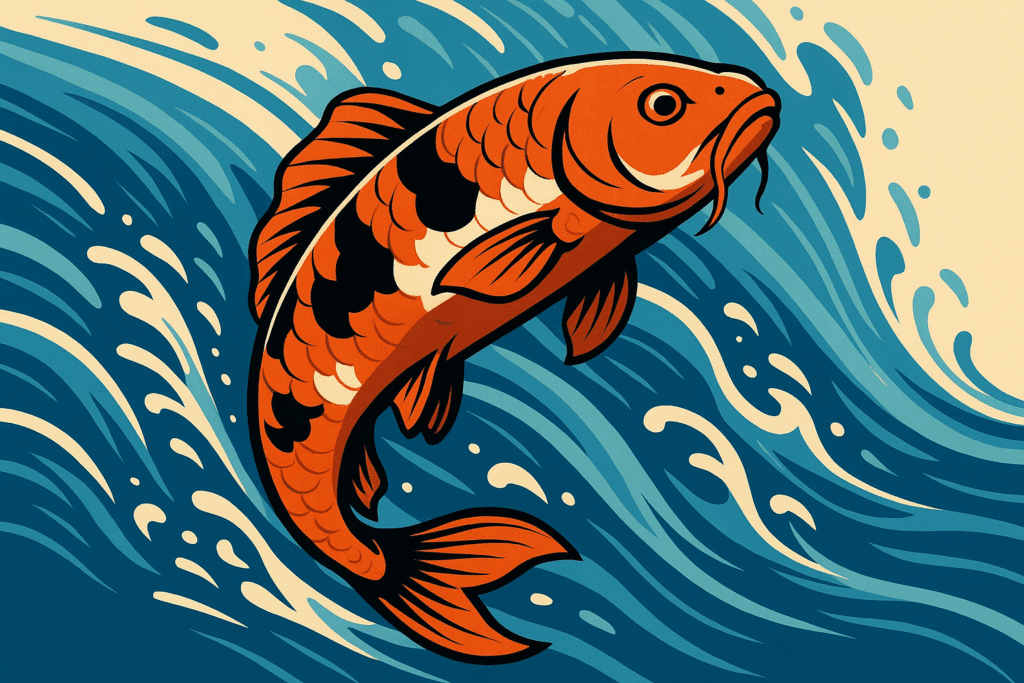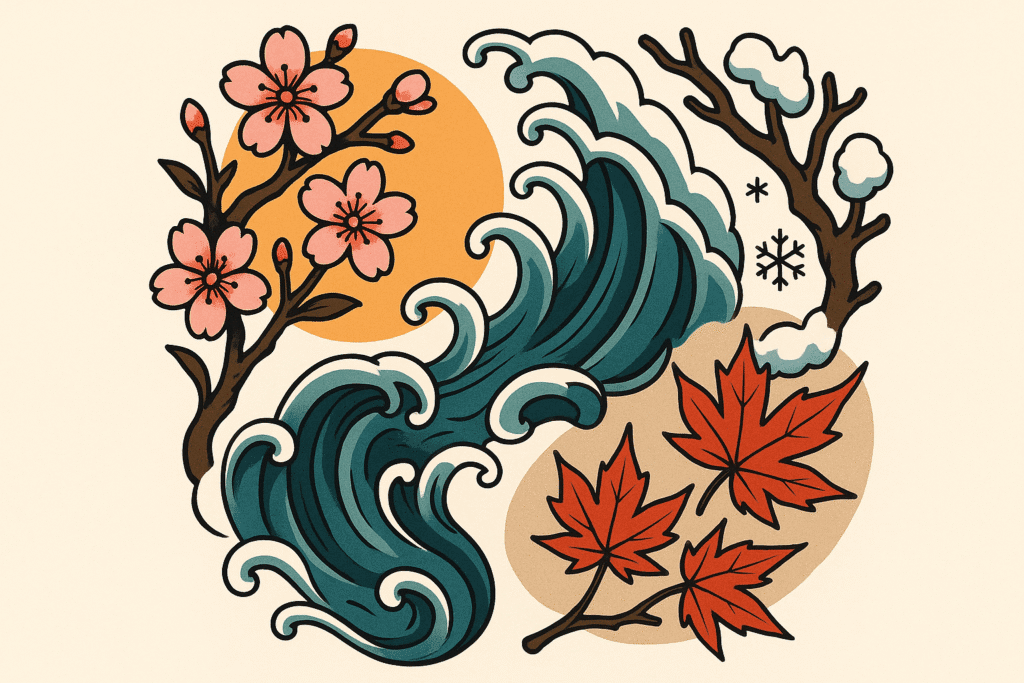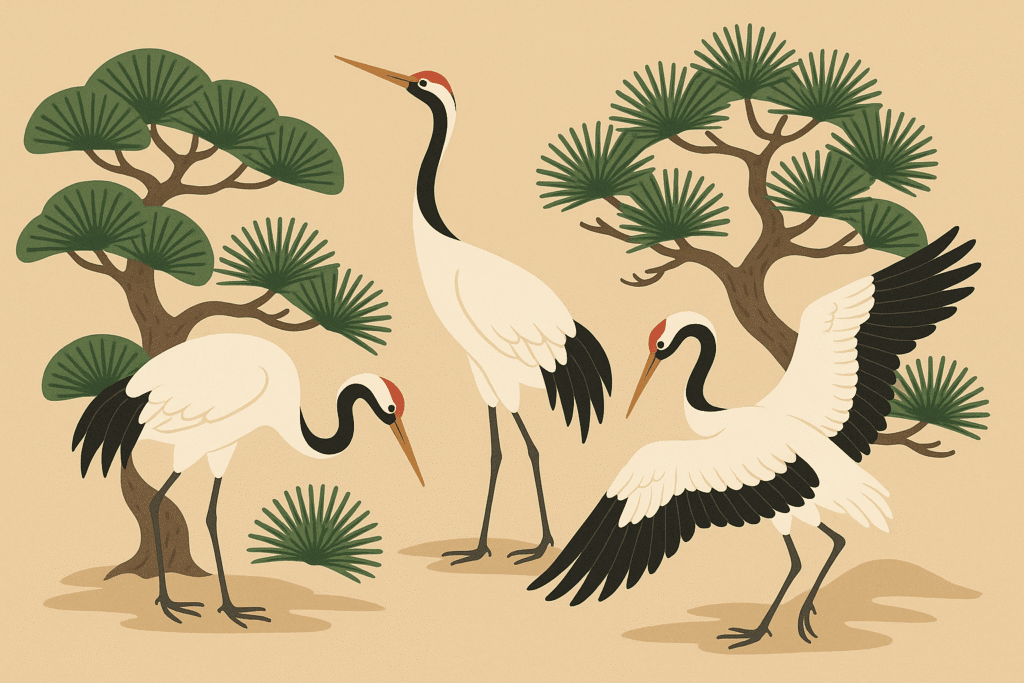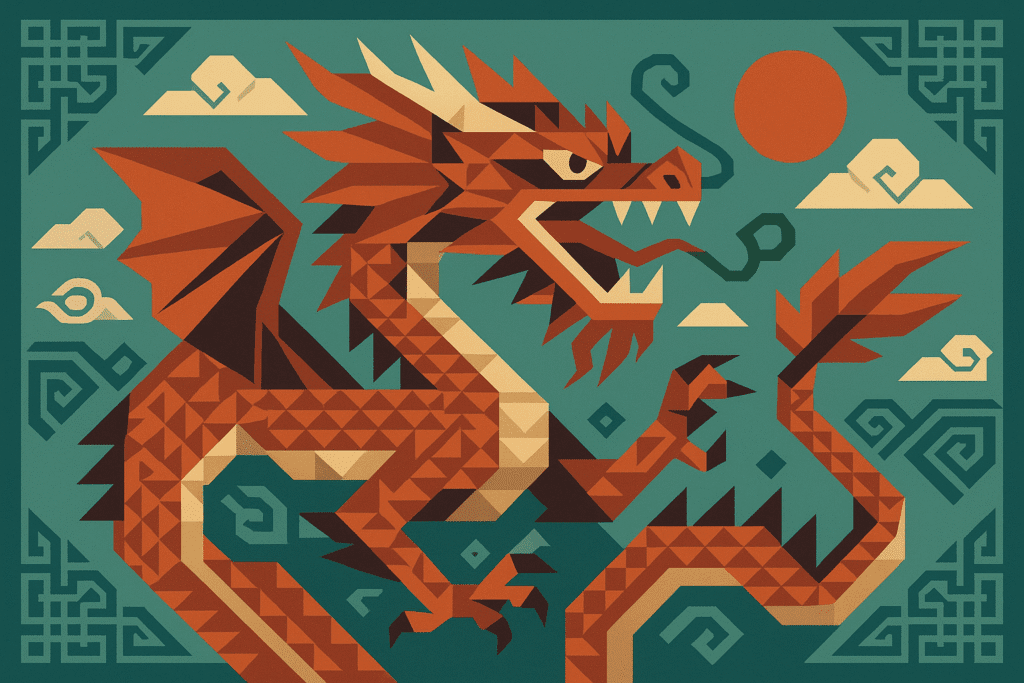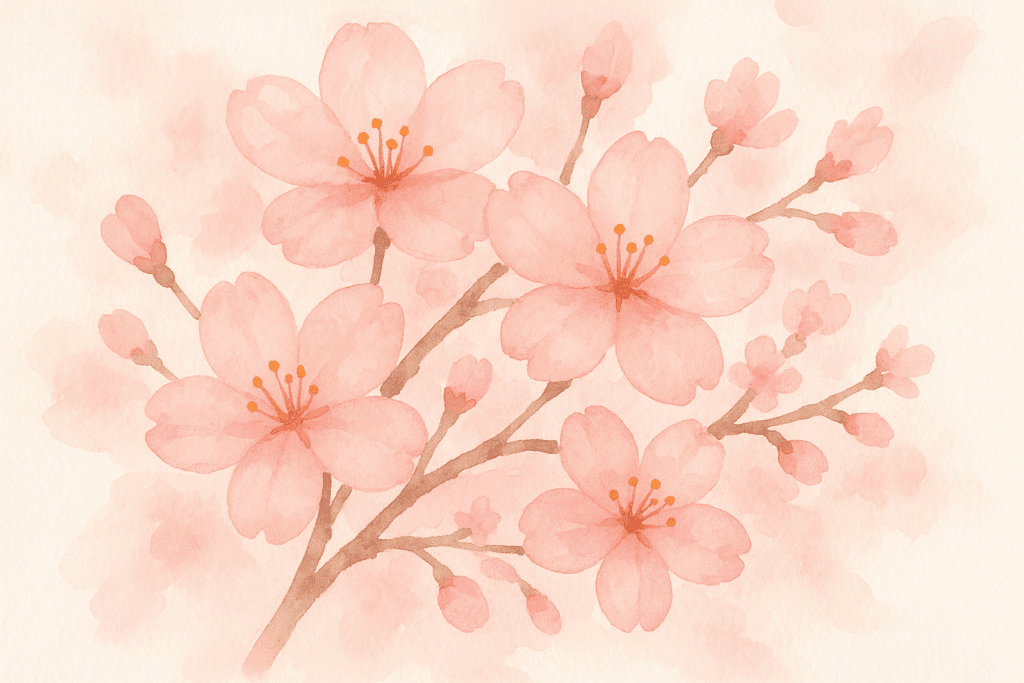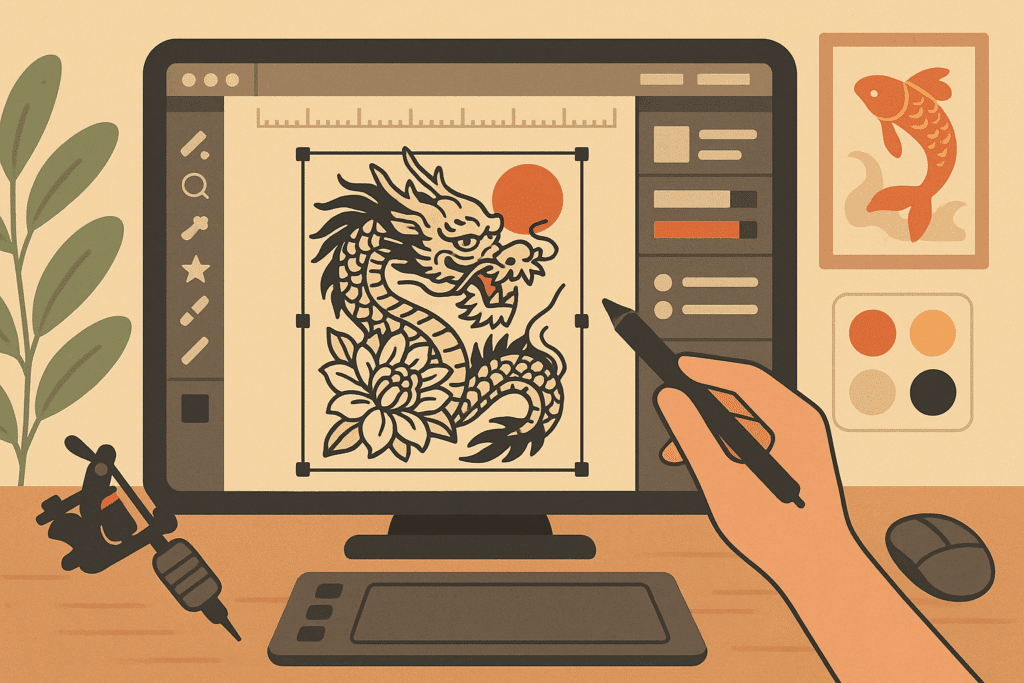25 Jaw-Dropping Japanese Sleeve Tattoo Designs That Will Transform Your Arm Into a Masterpiece
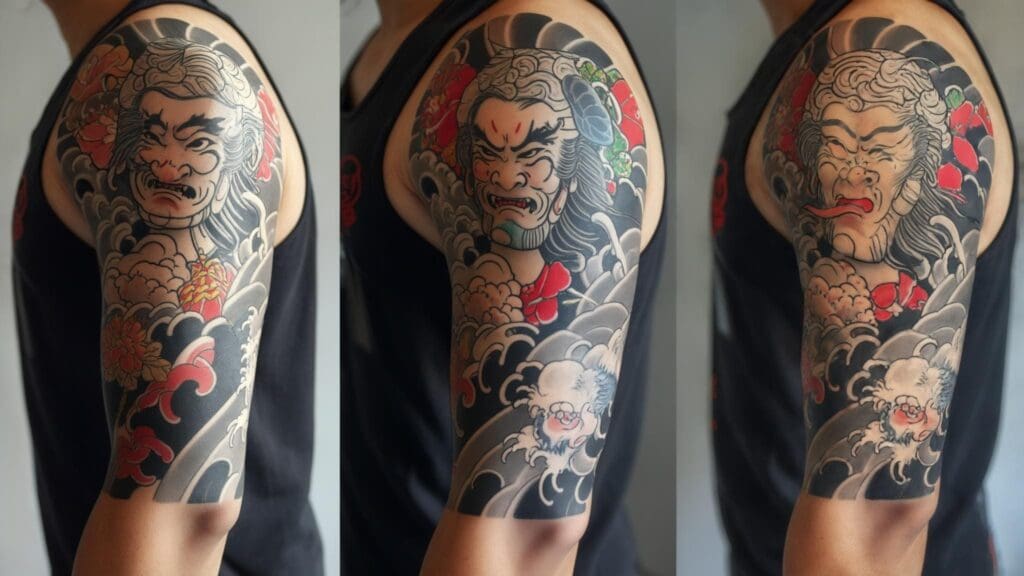
I’ll never forget walking into my first tattoo consultation five years ago, completely clueless about Japanese tattoos. I thought I just wanted “something with a dragon that looked cool.” Boy, was I in for a wake-up call. Turns out, over 40% of tattoo enthusiasts now explore Japanese-style designs, making irezumi one of the fastest-growing tattoo categories globally (source). Every wave direction, dragon pose, and cherry blossom placement carries specific meaning I’d never even considered.
Here’s the thing about Japanese sleeve tattoos – they’re not just pretty pictures. They’re storytelling canvases that weave together centuries of cultural tradition, spiritual symbolism, and artistic mastery. Whether you’re drawn to the powerful symbolism of ascending dragons or the peaceful elegance of koi swimming through lotus ponds, understanding these designs’ cultural roots and technical requirements will transform your tattoo journey from overwhelming to enlightening.
Let’s dive into 25 stunning Japanese sleeve tattoo designs across five traditional categories. I’ll give you the real deal on cultural significance, design complexity, and what you’re actually signing up for with each option. You’ll discover everything from traditional dragons and koi fish to modern fusion designs, plus the straight talk on choosing the right design for your personal journey into Japanese tattoo artistry.
Before You Jump In – Six Things I Wish Someone Had Told Me
Look, before you dive headfirst into a Japanese sleeve, there are six things that’ll make or break your experience. I learned some of these the hard way, so let me save you the headache. We’re talking about respecting cultural significance, managing design complexity and flow, choosing appropriate color palettes, determining proper placement and sizing, finding qualified artists, and preparing for the marathon that is getting a Japanese sleeve.
Understanding Cultural Significance – Don’t Be That Person
Here’s the thing about Japanese tattoo art (irezumi) – every single element has a story behind it, and honestly, that’s what makes them so incredible once you start digging in. Dragons facing upward represent ascension and spiritual growth, while downward-facing dragons symbolize wisdom and protection. Even cherry blossom placement affects meaning – scattered petals represent life’s fleeting nature, while full blooms celebrate present beauty.
I get it – you don’t want to be “that person” with a culturally tone-deaf tattoo. The good news? A little research goes a long way. Spend time learning what your symbols actually mean. Your future self will thank you, and you’ll have way cooler stories to tell.
When exploring traditional symbolism, consider how traditional japanese tattoo designs have evolved while maintaining their cultural integrity throughout centuries of artistic development.
Take Sarah’s story – she initially wanted a dragon tattoo simply because it looked “cool,” but after researching cultural meanings, she chose an ascending water dragon to represent her journey overcoming addiction. The upward-facing dragon symbolized her spiritual growth, while the water elements represented cleansing and renewal. Now that’s a tattoo with meaning.
Design Complexity – Some of These Are Crazy Complex
Traditional Japanese sleeves follow specific compositional rules that create visual harmony across your entire arm. Think of it like choreography – your dragon’s body should dance with your arm’s natural lines, while background waves or clouds fill spaces without stealing the show. Poor flow creates visual discord that even expert shading can’t fix.
Here’s the real talk on sleeve types:
Full Sleeve (Gobu): This is the whole enchilada. Shoulder to wrist, 6-8 sessions, and yeah, your wallet’s gonna feel it. But if you’ve got a big story to tell, this is your canvas. Perfect for complex narratives like seasonal transitions or koi-to-dragon transformations.
Three-Quarter: Stops at your forearm. Perfect if you want something impressive but need to keep it office-friendly with long sleeves. Great for single dragons or nature themes that need breathing room.
Half Sleeve (Gobusode): Ends at the elbow. Great for testing the waters without going full commitment mode. Works well for individual subjects or simple narratives that don’t need a novel’s worth of space.
Color Choices – Stick to What Works
Authentic Japanese tattoos use specific color combinations that aren’t just pretty – they enhance symbolic meaning. Traditional palettes favor bold reds, deep blues, and rich blacks, with strategic use of your skin tone as negative space.
Sure, modern interpretations might throw in some broader color ranges, but neon colors or pastels? They clash harder than a metal concert at a library. These colors just don’t vibe with the art form’s inherent boldness and cultural associations.
Placement and Sizing – Size Matters Here
Japanese sleeve tattoos demand careful consideration of your arm’s anatomy to achieve proper visual impact. Each variation requires different compositional approaches, and trust me, you don’t want to realize halfway through that you picked the wrong canvas size for your story.
Full sleeves accommodate complex narratives – think epic novels on your arm. Half sleeves work better for single-subject designs – more like a really good short story. Both can be amazing, but they tell different kinds of tales.
Understanding placement costs is crucial, as half sleeve tattoo pricing varies significantly based on design complexity and cultural authenticity requirements.
Finding the Right Artist – This Is Make or Break
Here’s your homework: stalk Instagram accounts of Japanese tattoo artists. Look at their healed work, not just the fresh stuff. Ask yourself – do their dragons look like they could actually fly? Do their koi look like they’re swimming or just floating there?
Not all tattoo artists can pull off authentic Japanese work. You need someone who gets both the technical skills and the cultural significance. Artists who’ve studied traditional Japanese art or trained with irezumi masters bring invaluable expertise that you can’t fake.
The Marathon Reality – Buckle Up
Forget what you’ve seen on TV tattoo shows. A proper Japanese sleeve isn’t a weekend project. We’re talking months, sometimes over a year. Budget for 3-8 sessions depending on complexity, with each session costing $200-800. Factor in healing time between sessions, aftercare products, and potential touch-ups every 5-10 years.
I know a guy who’s been working on his four-seasons sleeve for two years – and it’s still not done. Plan accordingly, and don’t book your sleeve reveal for your wedding next month.
Traditional Dragon Designs
Dragons are the holy grail of Japanese sleeve tattoos – iconic, culturally significant, and absolutely stunning when done right. These five interpretations showcase different elemental associations and symbolic meanings, from ascending water dragons to earth dragons with mountain elements. Just know that each one requires serious artistic expertise and significant time investment, but the payoff in terms of cultural symbolism around strength, wisdom, and spiritual power is incredible.
1. Ascending Water Dragon (Ryu)
Picture a dragon spiraling up your arm like it’s climbing an invisible staircase through clouds. The dragon’s body creates these amazing S-curves around your arm, with detailed scales that’ll take your artist hours to nail. Cherry blossoms accent the composition, symbolizing life’s fleeting beauty. When it’s done? Pure magic. Just be ready for some serious chair time.
Cultural Significance: Strength, wisdom, protection
Design Complexity: High – the scale work alone will test your artist’s patience
Color Palette: Black, gray, with red cherry blossom accents
Placement: Full sleeve recommended – anything smaller doesn’t do it justice
Artist Expertise: Essential – your artist needs to know traditional dragon anatomy
Long-term Commitment: 4-6 sessions over 8-12 months
2. Fire Dragon with Phoenix Elements
This one’s a showstopper – a powerful dragon emerging from flames, with phoenix feathers and fire elements dancing throughout the composition. It’s like watching two mythical creatures have an epic battle on your arm, except they’re actually working together to create visual harmony.
Cultural Significance: Rebirth, transformation, balance
Design Complexity: Very High – we’re talking complex layering that’ll make your artist’s head spin
Color Palette: Deep reds, oranges, black outlines
Placement: Full sleeve for the complete story
Artist Expertise: Master-level traditional knowledge required – don’t mess around here
Long-term Commitment: 6-8 sessions over 12-18 months
3. Ocean Dragon with Wave Patterns
Drawing inspiration from Hokusai’s famous wave motifs, this design shows a dragon navigating through stylized ocean waves. The composition creates movement through the interplay of dragon curves and wave patterns, all unified by traditional blue color schemes. It’s like having the ocean’s power permanently flowing around your arm.
Cultural Significance: Adaptability, power over nature
Design Complexity: High – those wave patterns need to be precise or they’ll look like squiggles
Color Palette: Blues, whites, black details
Placement: Three-quarter to full sleeve
Artist Expertise: Traditional wave technique knowledge required
Long-term Commitment: 4-5 sessions over 6-10 months
4. Wind Dragon with Cloud Formations
This ethereal design depicts a dragon moving through stylized clouds, emphasizing the creature’s connection to celestial elements. The subtle gradients and negative space usage create depth and movement that seems to shift as you move your arm.
Cultural Significance: Spiritual power, connection to heaven
Design Complexity: Medium-High – requires subtle shading techniques that not every artist can pull off
Color Palette: Grays, subtle blues, minimal color accents
Placement: Half to three-quarter sleeve works great
Artist Expertise: Strong understanding of negative space required
Long-term Commitment: 3-4 sessions over 4-6 months
5. Earth Dragon with Rock and Mountain Elements
A grounded design featuring a dragon emerging from stylized rock formations and mountain landscapes. The composition emphasizes stability and strength through angular elements balanced with the dragon’s organic curves. It’s perfect if you want something that feels solid and permanent.
Cultural Significance: Stability, endurance, grounding
Design Complexity: Medium – geometric elements balance organic forms nicely
Color Palette: Earth tones, browns, blacks, minimal color
Placement: Any sleeve length works well
Artist Expertise: Good understanding of geometric-organic balance
Long-term Commitment: 3-4 sessions over 4-8 months
Koi Fish and Water Element Designs
Koi fish designs are all about perseverance, transformation, and spiritual growth in Japanese tattoo tradition. These five interpretations range from upstream swimming koi to elegant black koi with gold accents. They showcase the profound symbolism of the koi’s legendary journey, including that mythical transformation into dragons that represents achieving your highest potential. Medium to high complexity, but totally worth it.
6. Upstream Swimming Koi
The classic – koi fish swimming upstream against flowing water currents. This design is all about showing that muscular fish form pushing against the current, symbolizing perseverance and determination. It’s like having a daily reminder that you don’t give up, even when life’s current is working against you.
Cultural Significance: Perseverance, courage, overcoming obstacles
Design Complexity: Medium – your artist needs to nail that water flow
Color Palette: Orange, black, blue water elements
Placement: Three-quarter to full sleeve
Artist Expertise: Traditional koi anatomy knowledge helpful
Long-term Commitment: 3-4 sessions over 4-6 months
The cultural depth of koi symbolism goes way beyond basic perseverance, as explored in our comprehensive guide to koi fish tattoo meaning and its spiritual significance in Japanese culture.
7. Koi Transformation to Dragon
This is where things get epic. The design shows koi fish at various stages of transformation into dragons, representing personal growth and achieving your goals. Multiple koi create visual rhythm throughout the composition, telling a complete story of evolution.
My buddy Jake spent two years on his koi transformation sleeve. Halfway through, he told me it felt like watching his life story unfold on his arm. The concept of ryuugyo (dragon fish) holds deep symbolic significance in Japanese culture, particularly within Zen philosophy. This transformation represents the mind’s journey toward enlightenment – the legendary koi that swims upstream and becomes a powerful dragon upon reaching the waterfall’s peak.
Mike’s transformation sleeve tells his personal story through the koi-to-dragon narrative. Starting at his wrist with small koi swimming upstream, the design progresses up his arm showing the fish growing larger and developing dragon features. At his shoulder, a fully formed dragon emerges from a waterfall, representing his journey from struggling college student to successful entrepreneur – each koi stage marking a major life milestone.
Cultural Significance: Achievement, transformation, reaching potential
Design Complexity: High – multiple elements require careful composition
Color Palette: Gold, red, black, blue accents
Placement: Full sleeve recommended for the complete story
Artist Expertise: Understanding of transformation symbolism essential
Long-term Commitment: 5-6 sessions over 8-12 months
8. Koi in Lotus Pond
Peaceful koi swimming among lotus flowers and lily pads, creating a serene composition that balances movement with tranquility. The design incorporates both above and below water perspectives, like having your own zen garden wrapped around your arm.
Cultural Significance: Peace, purity, spiritual growth
Design Complexity: Medium-High – multiple organic elements that need to flow together
Color Palette : Pink lotus, green leaves, gold koi
Placement: Three-quarter to full sleeve
Artist Expertise: Botanical knowledge enhances authenticity
Long-term Commitment: 4-5 sessions over 6-8 months
9. Koi with Cherry Blossom Petals
Koi fish swimming through falling cherry blossom petals – combining two of Japan’s most beloved natural symbols. The composition emphasizes seasonal beauty and life’s transient nature. It’s like capturing spring in Japan on your arm forever.
Cultural Significance: Life’s fleeting beauty, appreciation of moments
Design Complexity: Medium – requires delicate petal work that can’t look clunky
Color Palette: Pink blossoms, orange koi, subtle backgrounds
Placement: Any sleeve length appropriate
Artist Expertise: Delicate detail work skills important
Long-term Commitment: 3-4 sessions over 4-6 months
10. Black Koi with Gold Accents
An elegant design featuring black koi with gold scale highlights, creating sophisticated contrast and visual impact. The minimalist approach emphasizes the fish’s form and movement without all the extra bells and whistles.
The symbolism of black koi carries unique significance in Japanese culture, representing overcoming adversity through inner strength, as detailed in our exploration of black koi fish tattoo meaning and its powerful cultural associations.
Cultural Significance: Elegance, overcoming adversity, inner strength
Design Complexity: Medium – focus on form and shading
Color Palette: Black, gold highlights, minimal background
Placement: Half to three-quarter sleeve
Artist Expertise: Strong black and gray skills essential
Long-term Commitment: 2-3 sessions over 3-4 months
Samurai and Warrior Theme Designs
Samurai and warrior themed designs celebrate Japanese martial culture and honor codes through five powerful interpretations. We’re talking traditional samurai masks to supernatural ghost warriors. These designs typically require the highest complexity levels and deepest cultural understanding, so you’ll need a master-level artist who can respectfully portray the intricate details of armor, weaponry, and the complex symbolism surrounding Japan’s warrior class traditions.
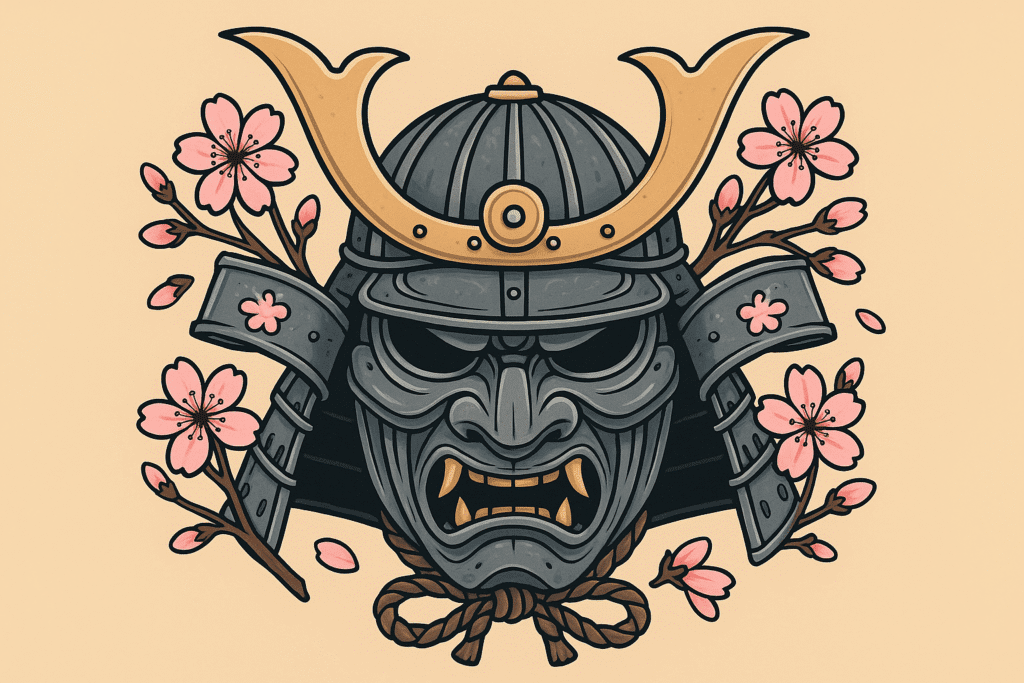
11. Samurai Mask (Menpo) with Cherry Blossoms
A detailed samurai face mask surrounded by cherry blossoms and traditional elements, representing the warrior’s dual nature of strength and appreciation for beauty. It’s like having the ultimate symbol of honor and duty permanently etched on your arm.
Cultural Significance: Honor, duty, balance of strength and beauty
Design Complexity: High – those mask details will test your artist’s skill
Color Palette: Metallic grays, pink blossoms, red accents
Placement: Three-quarter to full sleeve for proper detail
Artist Expertise: Historical accuracy knowledge beneficial
Long-term Commitment: 4-5 sessions over 6-8 months
12. Ronin Warrior Portrait
A masterless samurai depicted in traditional garb, often incorporating elements of weathering and travel. The design emphasizes the warrior’s journey and independence – perfect if you’re the type who walks your own path.
Cultural Significance: Independence, perseverance, personal journey
Design Complexity: Very High – portrait work requires serious expertise
Color Palette: Muted earth tones, fabric textures
Placement: Full sleeve for complete character portrayal
Artist Expertise: Portrait and historical knowledge essential
Long-term Commitment: 6-8 sessions over 10-15 months
13. Samurai Helmet (Kabuto) with War Fan
An ornate samurai helmet combined with traditional war fans and battle elements, creating a composition that celebrates martial artistry and strategic thinking. It’s like wearing the wisdom of ancient generals on your sleeve.
Cultural Significance: Strategy, leadership, martial excellence
Design Complexity: High – complex metalwork and patterns
Color Palette: Metallic tones, gold details, red accents
Placement: Three-quarter to full sleeve
Artist Expertise: Understanding of armor construction helpful
Long-term Commitment: 4-6 sessions over 6-10 months
14. Geisha Warrior Fusion
A unique design combining traditional geisha elements with warrior accessories, representing the strength found in traditionally feminine roles and the complexity of Japanese culture. This one requires serious cultural sensitivity to pull off right.
Cultural Significance: Hidden strength, cultural complexity, feminine power
Design Complexity: Very High – requires cultural sensitivity and technical skill
Color Palette: Traditional geisha colors with metallic accents
Placement: Full sleeve recommended
Artist Expertise: Deep cultural understanding essential
Long-term Commitment: 5-7 sessions over 8-12 months
15. Samurai Ghost (Yurei) Design
A supernatural interpretation featuring a ghostly samurai warrior, incorporating traditional Japanese ghost imagery with warrior elements for a haunting, powerful composition. It’s definitely not for everyone, but when done right, it’s absolutely mesmerizing.
Cultural Significance: Honor beyond death, spiritual strength
Design Complexity: High – ethereal elements require skill
Color Palette: Muted tones, ethereal blues and grays
Placement: Three-quarter to full sleeve
Artist Expertise: Understanding of supernatural imagery important
Long-term Commitment: 4-5 sessions over 6-8 months
Nature and Seasonal Element Designs
Nature and seasonal element designs capture Japan’s deep reverence for natural beauty and seasonal transitions through five distinctive compositions. We’re talking everything from comprehensive four-season narratives to elegant crane and pine tree arrangements. These designs celebrate the Japanese aesthetic principle of mono no aware (awareness of impermanence) while offering varying complexity levels that can accommodate different sleeve lengths and artistic skill requirements.
16. Four Seasons Sleeve
This is the ultimate nature narrative – cherry blossoms for spring, flowing water for summer, maple leaves for autumn, and snow-covered branches for winter. It’s like having a year’s worth of Japanese natural beauty permanently cycling around your arm.
Cultural Significance: Life’s cycles, natural harmony, time’s passage
Design Complexity: Very High – multiple seasonal elements that need to flow together
Color Palette: Full spectrum seasonal colors
Placement: Full sleeve essential for the complete concept
Artist Expertise: Botanical and seasonal knowledge required
Long-term Commitment: 6-8 sessions over 12-18 months
17. Phoenix in Flight with Peonies
A majestic phoenix soaring through peony flowers, combining the mythical bird’s rebirth symbolism with the peony’s associations with honor and wealth. The feather work alone will blow your mind when it’s done right.
Cultural Significance: Rebirth, honor, prosperity
Design Complexity: High – complex feather work and flowers
Color Palette: Vibrant reds, golds, pink peonies
Placement: Three-quarter to full sleeve
Artist Expertise: Feather texture and floral skills important
Long-term Commitment: 4-6 sessions over 6-10 months
18. Crane and Pine Tree Composition
Elegant cranes among stylized pine trees, representing longevity and steadfastness. The design emphasizes graceful lines and balanced composition – it’s like having a meditation scene you can carry with you everywhere.
Cultural Significance: Longevity, fidelity, steadfastness
Design Complexity: Medium-High – requires graceful line work
Color Palette: Natural greens, whites, black details
Placement: Any sleeve length works well
Artist Expertise: Understanding of bird anatomy helpful
Long-term Commitment: 3-4 sessions over 4-6 months
19. Tiger in Bamboo Forest
A powerful tiger moving through stylized bamboo, creating dynamic vertical lines that complement the big cat’s muscular form and fierce expression. The vertical bamboo naturally follows your arm’s length while the tiger brings that raw power element.
David’s tiger and bamboo sleeve demonstrates perfect cultural research and execution. After learning that tigers represent courage and protection in Japanese culture, while bamboo symbolizes flexibility and resilience, he worked with his artist to position the tiger emerging from dense bamboo stalks. The tiger’s powerful stance represents his role as a protector of his family – creating both visual impact and personal meaning.
Tigers hold profound significance in Japanese culture beyond their visual appeal, as explored in our detailed analysis of tiger tattoo meaning and its psychological depths.
Cultural Significance: Strength, courage, protection
Design Complexity: High – tiger anatomy and bamboo patterns
Color Palette: Orange tiger, green bamboo, black details
Placement: Three-quarter to full sleeve recommended
Artist Expertise: Animal anatomy knowledge essential
Long-term Commitment: 4-5 sessions over 6-8 months
20. Lotus Pond with Dragonflies
A serene composition featuring lotus flowers in various stages of bloom with delicate dragonflies. It emphasizes tranquility and spiritual growth – perfect if you want something that radiates peace rather than power.
Cultural Significance: Spiritual purity, enlightenment, transformation
Design Complexity: Medium – delicate detail work required
Color Palette: Pink lotus, green leaves, subtle dragonfly colors
Placement: Half to three-quarter sleeve
Artist Expertise: Botanical detail skills important
Long-term Commitment: 3-4 sessions over 4-6 months
Modern Fusion Designs
Modern fusion designs bridge traditional Japanese tattoo artistry with contemporary aesthetic principles. These five innovative interpretations maintain cultural respect while embracing modern techniques, from geometric dragon compositions to watercolor cherry blossoms. They’re perfect if you want Japanese symbolism through a fresh artistic lens, but you’ll need artists skilled in both traditional knowledge and contemporary methods.
21. Geometric Dragon with Traditional Elements
A contemporary interpretation combining geometric patterns with traditional dragon imagery, creating visual tension between modern design principles and classical subjects. It’s like having ancient wisdom filtered through a modern lens.
Cultural Significance: Tradition meets innovation, personal evolution
Design Complexity: High – requires balance of contrasting styles
Color Palette: Limited palette with geometric precision
Placement: Three-quarter to full sleeve
Artist Expertise: Both geometric and traditional skills needed
Long-term Commitment: 4-5 sessions over 6-8 months
22. Minimalist Koi with Negative Space
A simplified approach to traditional koi imagery, using negative space and minimal linework to create impact through restraint rather than complexity. Sometimes less really is more.
Cultural Significance: Essence over decoration, modern mindfulness
Design Complexity: Medium – requires restraint and precision
Color Palette: Limited, strategic color use
Placement: Half to three-quarter sleeve
Artist Expertise: Understanding of negative space essential
Long-term Commitment: 2-3 sessions over 3-4 months
23. Digital Glitch Samurai
A futuristic interpretation of samurai imagery incorporating digital glitch effects and cyberpunk elements while maintaining respect for traditional symbolism. It’s definitely not traditional, but it’s undeniably cool.
Cultural Significance: Honor in digital age, technological evolution
Design Complexity: Very High – complex technical effects
Color Palette: Electric blues, cyans, traditional accents
Placement: Full sleeve for complete effect
Artist Expertise: Modern techniques and traditional knowledge
Long-term Commitment: 5-6 sessions over 8-10 months
24. Watercolor Cherry Blossoms
Traditional cherry blossom imagery rendered in watercolor techniques, creating soft, flowing effects that contrast with typical bold Japanese approaches. It’s like having spring painted on your arm.
Cultural Significance : Gentle beauty, artistic innovation
Design Complexity: Medium-High – watercolor techniques are tricky
Color Palette: Soft pinks, subtle gradients
Placement: Any sleeve length works
Artist Expertise: Watercolor tattoo experience important
Long-term Commitment: 3-4 sessions over 4-6 months
25. Abstract Wave Patterns
Modern interpretation of traditional Japanese wave motifs using abstract forms and contemporary color palettes while maintaining the dynamic energy of classical designs. It captures the essence of water without literal representation.
Cultural Significance: Timeless natural forces, artistic evolution
Design Complexity: Medium – requires understanding of flow
Color Palette: Contemporary blues, unexpected accents
Placement: Three-quarter to full sleeve
Artist Expertise: Abstract design skills with traditional knowledge
Long-term Commitment: 3-4 sessions over 4-6 months
How These Designs Address Your Main Concerns
Each design category tackles those six key considerations differently. Traditional dragons and nature elements offer the most authentic cultural connections, while modern fusion designs require careful balance to maintain respect. Design complexity varies like crazy – from simple minimalist approaches to master-level traditional work. Placement requirements and artist expertise needs shift based on your chosen style and cultural authenticity goals.
Traditional dragons and nature elements offer the most authentic cultural connections, while modern fusion designs require careful balance to maintain respect. Samurai themes demand deep cultural understanding to avoid appropriation.
Dragons and warrior portraits rank highest in complexity, requiring master-level artists, while minimalist and geometric designs offer more accessible entry points for those seeking Japanese sleeves with simpler execution.
Traditional designs work best with authentic Japanese color schemes (reds, blues, blacks), while modern fusion allows broader palette exploration. Watercolor and geometric styles can incorporate contemporary color theories.
Full sleeves work best for narrative designs like four seasons or koi transformation stories, while half sleeves suit single-subject designs featuring individual koi or cherry blossoms. Three-quarter sleeves offer a good compromise for most designs.
Traditional dragons, samurai portraits, and cultural fusion pieces require artists with deep knowledge of Japanese tattoo traditions. Geometric and minimalist designs need technical precision but less cultural expertise.
Complex narrative sleeves require 6-18 months of sessions, while simpler designs can be completed in 3-6 months. Modern minimalist approaches offer quicker completion times for those wanting Japanese aesthetics with less time investment.
Using Technology to Plan Your Perfect Design
The complexity and cultural significance of Japanese sleeve tattoos make them perfect candidates for AI-assisted design exploration. Tattoo Generator IQ offers comprehensive educational resources, style blending capabilities, professional artist collaboration tools, and design iteration features that help you develop culturally respectful and artistically sound Japanese sleeve concepts before committing to such a significant tattoo investment.
Look, designing a Japanese sleeve is overwhelming. I get it. The complexity and cultural significance make them ideal for AI-assisted design exploration. Tattoo Generator IQ’s professional-quality outputs and educational approach address the key challenges of Japanese tattoo design.
Our platform’s comprehensive educational resources help you understand the cultural significance behind Japanese tattoo elements, ensuring respectful design choices that honor traditional meanings rather than appropriating symbols carelessly.
Tattoo Generator IQ’s custom style blending feature lets you explore authentic Japanese styles while experimenting with modern interpretations, helping you find that perfect balance between tradition and personal expression.
The platform’s artist-ready references and placement guides are particularly valuable for Japanese sleeve projects, which require precise execution and cultural understanding. These tools make communication between clients and artists about complex traditional elements so much smoother.
Japanese sleeve tattoos benefit enormously from iterative design development. Tattoo Generator IQ’s ability to generate multiple variations helps you explore different compositional approaches, color schemes, and element combinations before committing to such a significant tattoo investment.
Ready to explore your perfect Japanese sleeve design? Try Tattoo Generator IQ today and discover how AI-powered design tools can help you create culturally respectful, artistically stunning concepts that honor traditional Japanese tattoo artistry.
Before You Take the Plunge
Whether you’re drawn to the powerful symbolism of ascending dragons, the peaceful beauty of koi among lotus flowers, or the modern elegance of geometric interpretations, Japanese sleeve tattoo designs offer profound opportunities for personal expression through centuries-old artistic traditions. The 25 designs we’ve explored represent just the beginning of your journey into this rich cultural art form.
I’m gonna level with you – getting a Japanese sleeve changed my life. Not in some cheesy, inspirational poster way, but in a real, everyday way. I carry centuries of art and meaning on my arm, and that’s pretty incredible. But it’s also permanent, expensive, and time-consuming.
Remember that choosing a Japanese sleeve tattoo isn’t just about selecting beautiful imagery – it’s about committing to a cultural dialogue that spans generations of artistic mastery. Take time to understand the symbolism, find an artist who respects the tradition, and prepare for the significant investment of time, money, and emotional energy these designs require.
Make sure you’re ready for all of it – the good, the bad, and the “holy crap, how many more sessions do I have left?” moments. Because once you start this journey, there’s really no going back. And honestly? Most of us wouldn’t want to anyway.
Your perfect Japanese sleeve tattoo awaits, combining traditional wisdom with your personal story in ways that will inspire and empower you for decades to come. The key lies in approaching this decision with the respect, patience, and cultural awareness that this magnificent art form deserves.
